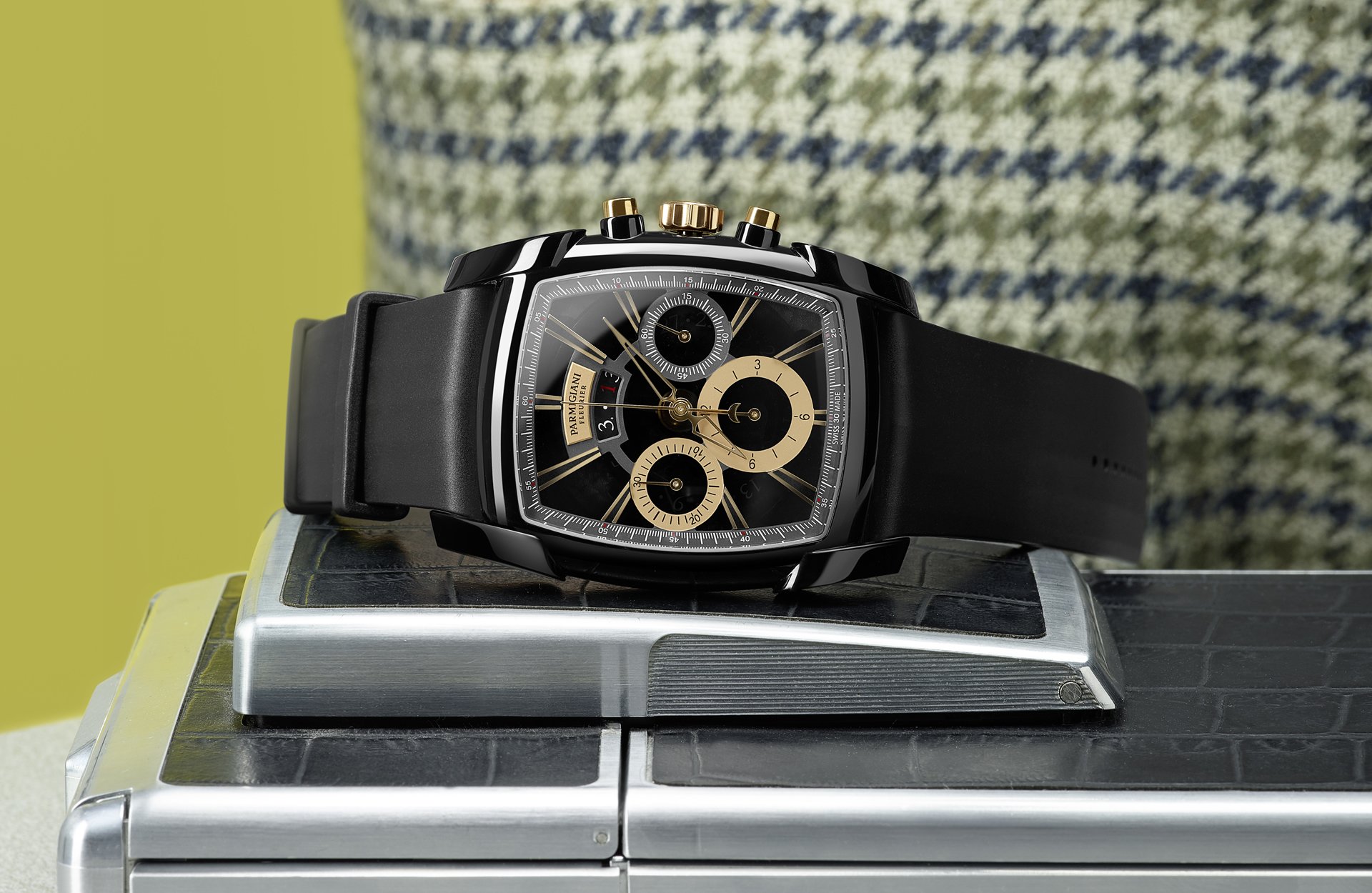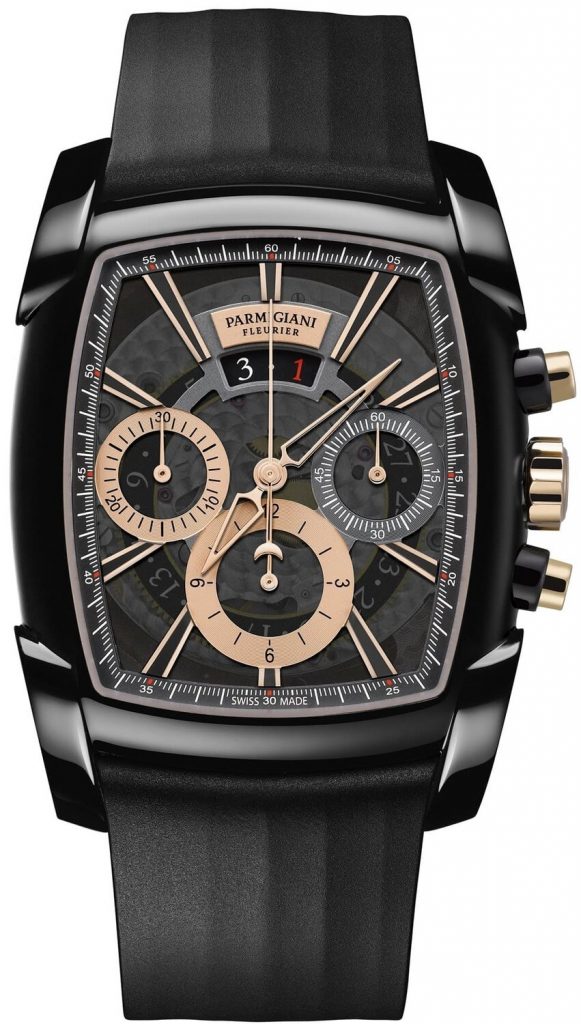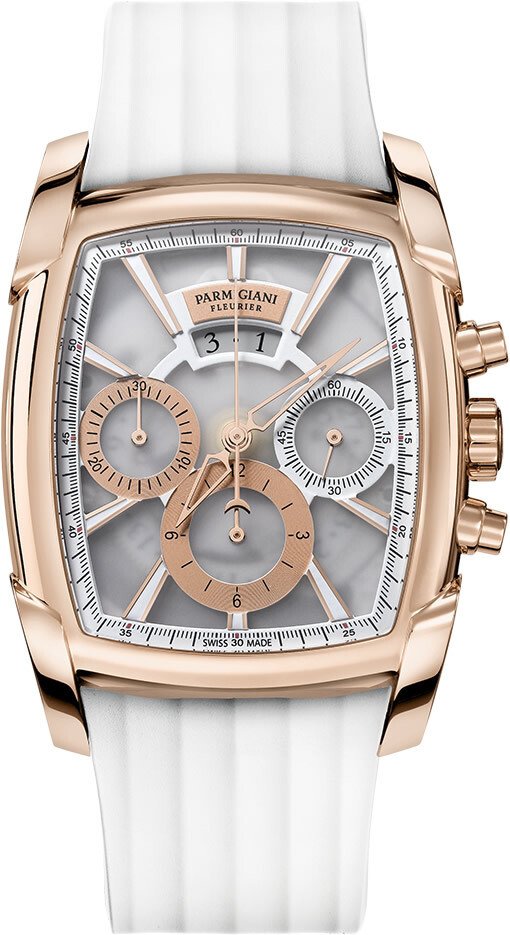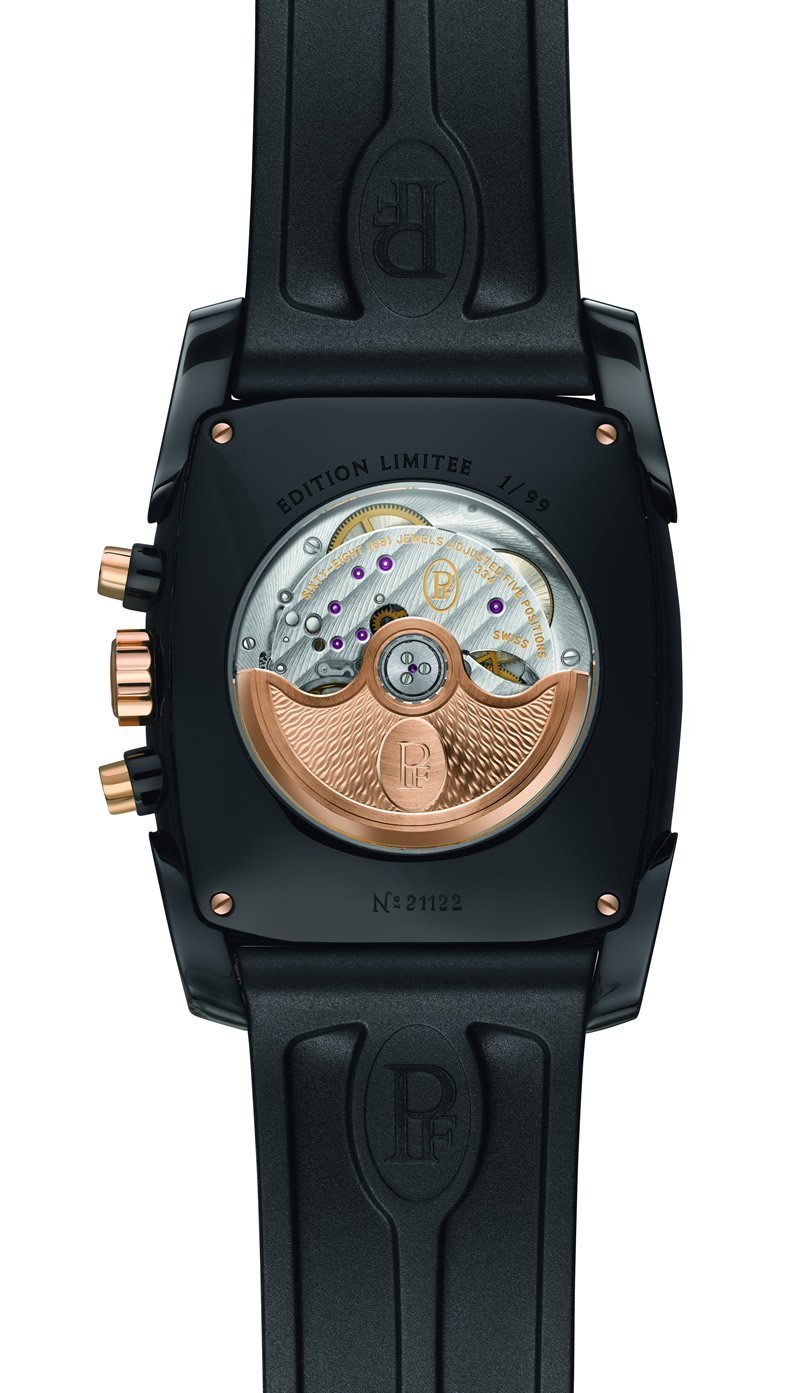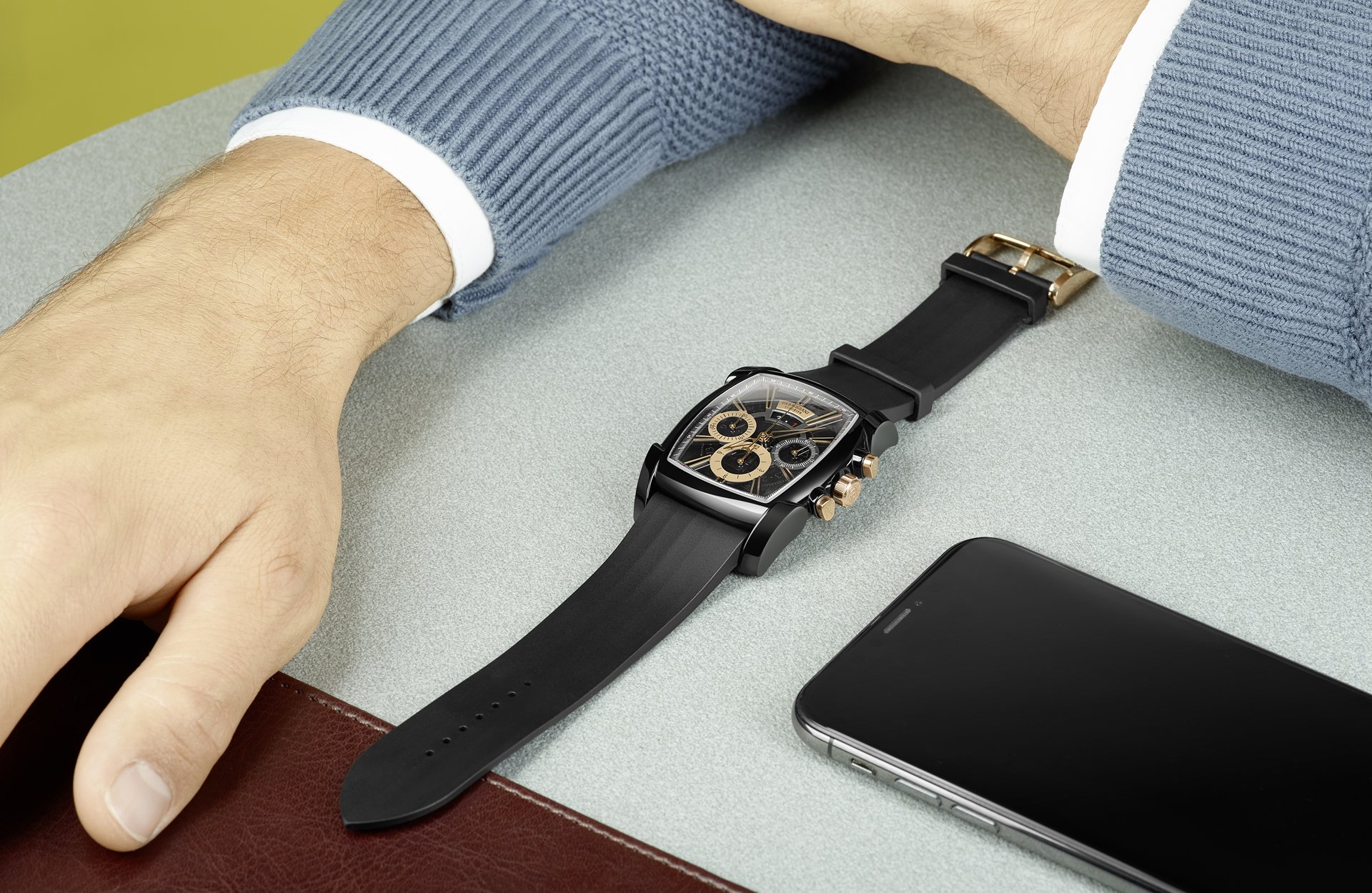In tribute to black and white, with all their associated symbolism, Parmigiani Fleurier is launching a rose gold diamond-set Kalpagraphe with a white sapphire dial for ladies, and a gloss black Kalpagraphe with a grey sapphire dial for men. Faithful to the brand’s Kalpa collection, these timepieces are tonneau-shaped.
Parmigiani Fleurier is pleased to unveil the Kalpagraphe Blanc and the Kalpagraphe Noir, a chic and sporty pair of chronographs in white and black respectively. These two colours, opposites yet complementary, symbolise the wholeness of male/female. They are also used in many contexts and cultures to represent duality and, at the same time, union.
The new ladies’ Kalpagraphe from the Parmigiani Manufacture features a white sapphire dial, with a rose gold case enhanced with a diamond setting. This elegant and contemporary timepiece is paired with a white rubber strap.
The men’s Kalpagraphe, for its part, emphasises darker hues: Its gloss black steel case is paired with a black rubber strap and a grey sapphire dial. The black of the case is obtained thanks to a treatment known as ADLC (Amorphous Diamond-like Carbon), which is highly wear-resistant with a flawless finish to meet the highest expectations.
The notable features these two timepieces share include the PF334 self-winding chronograph movement, the use of rose gold for the crown, the push-pieces and counters at 6 and 9 o’clock, the case-back screws and the ardillon buckle, and of 22-carat gold for the oscillating weight.
Parmigiani Fleurier’s history began when Michel Parmigiani opened a restoration workshop in 1976. This marked the start of his in-depth study of the mechanical masterpieces of the past. It led to the creation of the Parmigiani Fleurier brand, and the company has continued to house a restoration workshop capable of working on any horological piece. This has been a source of inspiration for everything the brand has created.
In terms of measuring time, Parmigiani Fleurier, which drew its inspiration from the pieces restored in its workshop, was fascinated by two pair-cased pocket watches created by James Cox, pieces dating from the 18th century which are held in the Edouard and Maurice Sandoz Foundation collection. A jumping seconds mechanism, formed of a hand which makes one revolution per second, was one of the complications found on these timepieces.

